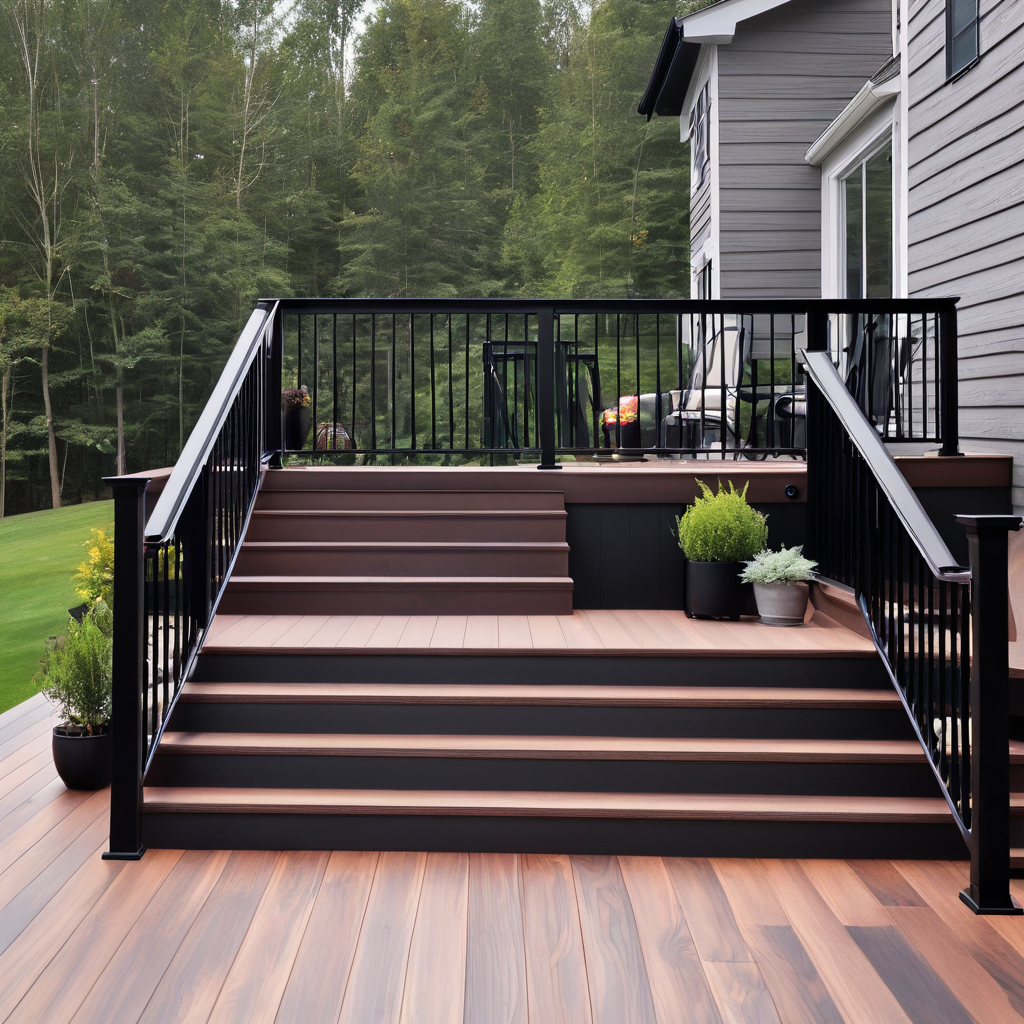
When designing or renovating a deck, one critical decision is selecting the right handrails. Handrails not only provide safety and support but also contribute significantly to the deck’s aesthetic appeal. The most popular materials for deck handrails are aluminum, wood, and composite. Each comes with its unique advantages and considerations. Let’s delve into the specifics of these materials to help you make an informed decision.
Aluminum Handrails
Advantages:
- Durability: Aluminum handrails are incredibly resistant to corrosion and rust, making them ideal for all weather conditions, especially in coastal areas where salt air is prevalent.
- Maintenance: They require minimal maintenance. A simple rinse with soap and water is often enough to keep them looking new.
- Aesthetics: Aluminum handrails offer a sleek, modern look. They come in various colors and finishes, allowing for customization according to your deck’s design.
- Weight: Aluminum is lightweight yet strong, making the installation process easier and faster compared to heavier materials.
Considerations:
- Cost: Generally, aluminum handrails are more expensive upfront than wood. However, their durability and low maintenance can make them more cost-effective in the long run.
- Temperature Sensitivity: Aluminum can become quite hot to the touch when exposed to direct sunlight and cold in winter.
Wooden Handrails
Advantages:
- Natural Look: Wood handrails provide a classic, timeless aesthetic that complements any outdoor setting. They can be stained or painted to match your deck’s design.
- Versatility: Wood is easily customizable. You can cut and shape it into any design, allowing for unique and intricate patterns.
- Warmth: Unlike metal options, wood does not become overly hot or cold, making it comfortable to touch in any weather.
Considerations:
- Maintenance: Wood requires regular maintenance, including sanding, staining, or painting, to protect it from the elements and prevent rot, splinters, and fading.
- Durability: While some types of wood are naturally resistant to rot and insects, most wooden handrails are less durable than aluminum or composite materials, especially if not properly maintained.
Composite Handrails
Advantages:
- Low Maintenance: Composite handrails are made from a blend of wood fibers and plastic, requiring minimal upkeep. They do not need staining, painting, or sealing.
- Durability: These handrails are resistant to rot, insects, and weathering, making them a long-lasting option.
- Aesthetics: Composite materials can mimic the look of wood without its disadvantages. They come in a variety of colors and textures.
Considerations:
- Cost: Composite handrails can be more expensive than wood and similar in price to aluminum. However, their durability and low maintenance requirements may offset the initial investment over time.
- Weight: Composite materials are generally heavier than wood and aluminum, which could influence the installation process.
The choice between aluminum, wood, and composite handrails for your deck depends on various factors, including your budget, maintenance willingness, climate, and aesthetic preference. Aluminum offers modernity and minimal upkeep, wood provides a classic look and feel, and composite combines the best of both with its durability and low maintenance. By considering the advantages and limitations of each material, you can select the perfect handrails to complement your deck and enhance your outdoor living space for years to come.
Cedar Hill St. Louis Jefferson County Olivette Kirkwood Ballwin Arnold Franklin County St Charles County Fenton High Ridge Dittmer Creve Coeur
